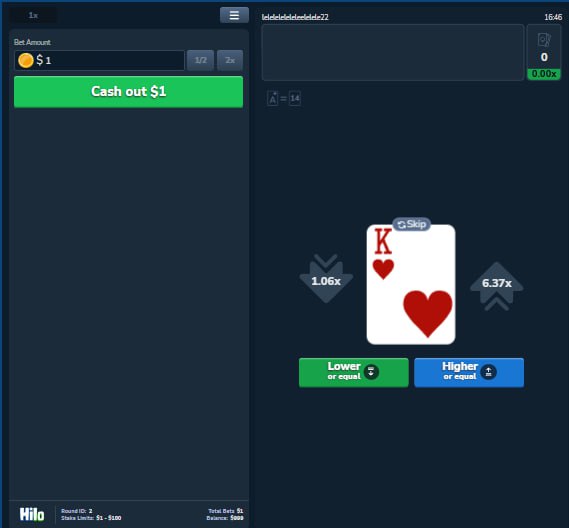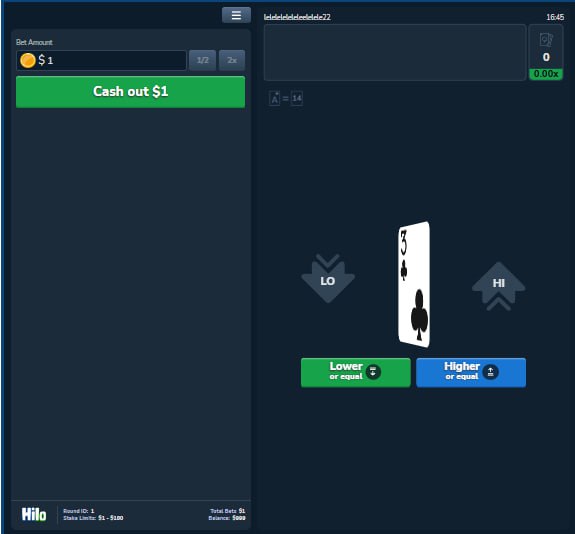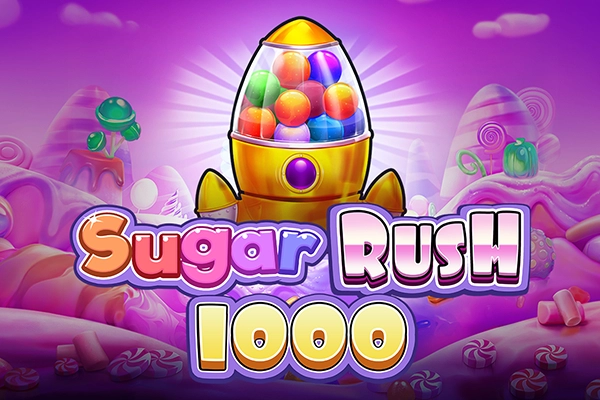iMoon presents Hilo, a game focusing on direct card value prediction rather than complex reel mechanics. This online card game challenges players to predict if the next card will be higher or lower in value compared to the current one. Consecutive successful predictions increase a potential payout multiplier, which changes based on the probabilities presented by the current card’s rank. The game features a key strategic control point: the Cash Out option, allowing players to secure accumulated winnings at any point after a correct prediction. Its atmosphere is notably minimalist, foregrounding the card action itself. This straightforward design caters to players interested in testing basic probability understanding and risk management. Hilo offers a different tempo and strategic depth compared to feature-heavy video slots. Engaging with its core loop requires attentive evaluation of card values and calculated decisions on continuing or securing profits.
iMoon presents Hilo, an online game that takes a direct path, departing from the common structure of reel-spinning slot machines. Instead, Hilo centers its gameplay on a fundamental concept rooted in card probabilities and sequential prediction. Developed by iMoon, this game streamlines the online gaming experience to focus on quick decisions and immediate outcomes, appealing to players who appreciate clear odds and simple mechanics over complex bonus structures or intricate themes. It is a title that asks players to engage with probability on a turn-by-turn basis, offering a distinctly different rhythm compared to the layered feature sets typical of modern video slots. The appeal lies in its straightforward nature and the palpable tension built through consecutive correct predictions.
The core experience of Hilo is less about theme or visual spectacle and more about the interaction with cards and probabilities. This focus positions it as an intriguing option for experienced players seeking a different kind of challenge online, for individuals interested in testing basic prediction strategies, or for anyone simply looking for accessible and engaging free online games without the need to learn elaborate rulesets. The immediate feedback loop of predicting and revealing the next card forms the central pillar of its entertainment value.

The Central Gameplay Loop and Prediction Mechanics
The fundamental action in Hilo revolves around predicting the value of the next card drawn from a standard deck relative to the currently displayed card. Each round initiates with a single card shown face-up. Following this, players are presented with two primary options: to predict whether the next card revealed will be “Lower or Equal” in value to the current card, or “Higher or Equal.” Numerical card values correspond to their face rank, with Aces typically ranking low (as 1) and Kings ranking high (as 13), though some variations might adjust Ace value – understanding the specific ranking is crucial.
Making a prediction is the sole decision point before the next card is drawn. Should the drawn card match the player's prediction – either being within the ‘lower or equal' range or the ‘higher or equal' range of the current card's value – the player's wager receives a payout based on a dynamic multiplier. An incorrect prediction, where the drawn card falls outside the predicted range, results in the loss of the wager and concludes the current sequence of predictions. This binary outcome for each step keeps the gameplay focused and the consequences immediate. The round's flow is therefore a sequence of revealed card -> player prediction -> next card revealed -> outcome (win/lose) -> continue or start new round.
The unique characteristic of Hilo's gameplay loop is its sequential nature after a correct prediction. Unlike a slot where each spin is typically an independent event (outside of specific multi-spin bonuses), Hilo allows players who predict correctly to continue. The newly drawn card then becomes the current card for the next step, and the player is presented with another prediction opportunity based on this new value. This creates a chain of successful predictions, each step adding to a cumulative multiplier that grows as the player continues.
Understanding Payout Multipliers and Probability
The payout multiplier in Hilo is not static; it dynamically adjusts based on the statistical probability of the chosen outcome occurring given the current face-up card. This is where the game's connection to probability becomes most apparent and valuable for players studying card mechanics.
Consider the possible predictions and how the current card value influences the odds and potential reward:
Current Card is Low (e.g., a 2 or 3): The probability of the next card being “Higher or Equal” is very high (many cards in the deck are higher than a 2 or 3). Consequently, predicting “Higher or Equal” when a low card is showing offers a very low multiplier, reflecting the high likelihood of success. Conversely, the probability of the next card being “Lower or Equal” (only an Ace, if it's the lowest, or another card of the same rank if the deck isn't infinite) is very low, so predicting “Lower or Equal” in this scenario yields a significantly higher potential multiplier, reflecting the low probability of this outcome.
Current Card is High (e.g., a King or Queen): The inverse applies. Predicting “Lower or Equal” has a high probability and results in a low multiplier. Predicting “Higher or Equal” has a low probability (only an Ace if high, or another card of the same rank) and offers a high multiplier.
Current Card is Mid-Range (e.g., a 7 or 8): Here, the distribution of higher and lower cards in the remaining deck is closer to even. Predicting “Higher or Equal” or “Lower or Equal” both carry moderate probabilities. As such, successful predictions on mid-range cards tend to yield the most balanced and often highest multipliers compared to predictions made when extreme card values are showing.
This dynamic multiplier system is crucial for strategy. It openly presents the risk-reward profile of each prediction based on hard mathematical odds. Players aiming for slow, steady accumulation might favor low-multiplier, high-probability predictions on extremes, while those seeking larger, though less frequent, gains will look for opportunities to predict correctly from mid-range cards. The game doesn't just present random numbers; it links reward directly to observable probability based on standard card values. This aspect is highly valuable for anyone seeking to understand how odds translate into payouts in casino card games, providing a tangible demonstration often lacking in opaque slot machine mechanics.
The “Cash Out” Feature: Controlling Risk
A central strategic element in Hilo, and what differentiates a successful extended run from a single win, is the Cash Out feature. Available after any successful prediction within a sequence, this function allows players to secure their accumulated winnings up to that point. Each correct prediction in a round increases the current multiplier, and thus the potential payout, but continuing also means risking that entire accumulated amount on the next prediction.
The decision to cash out is entirely in the player's hands. After a correct prediction reveals the next card and the new potential total payout (current bet multiplied by the cumulative multiplier) is displayed, players can either click the “Cash Out” button to end the round and collect the displayed amount, or make another prediction based on the new card to continue the sequence. This creates a direct and engaging risk management dynamic. For example, hitting several correct predictions in a row could build a significant multiplier. The tension then shifts from predicting the card correctly to deciding whether to push for a potentially higher win on the next flip or secure the already substantial amount.
This mechanic transforms Hilo from a simple game of chance into one that incorporates elements of judgment and nerve. It allows players to define their own comfort level with risk within a given round. The potential reward grows geometrically with each correct step, but a single incorrect step resets the entire sequence's progress, highlighting the critical role of the Cash Out decision. It’s a simple concept but profoundly impacts the player experience and strategic considerations.
Interface, Presentation, and Information Accessibility
The visual design of iMoon's Hilo is deliberately simple and functional. The backdrop is a dark, uncluttered canvas, ensuring the focus remains entirely on the cards and the interactive elements. There are no distracting animations, complex backdrops, or elaborate themes pulling attention away from the core gameplay. The cards themselves are rendered clearly, with standard suit and rank visuals that are immediately recognizable. The animation for revealing the next card is a straightforward flip, quick and efficient, keeping the game flow rapid. This minimalist approach ensures clarity and makes the game highly accessible, regardless of technical constraints.
The user interface is equally spartan and effective. The current card is prominently displayed. The “Lower or Equal” and “Higher or Equal” buttons are large and easily distinguishable, often color-coded for intuitive use. The predicted outcome's potential multiplier is usually displayed on these buttons before the next card is drawn, giving players immediate feedback on the risk/reward associated with their choice. The “Cash Out” button is clearly labeled and shows the amount that would be collected if clicked.
Beyond the primary gameplay elements, Hilo provides access to key information points essential for player tracking and understanding. A ‘History' feature, often located on the side of the screen or accessible through a menu, logs the sequence of cards drawn and predictions made in the current round or session. This allows players to review the game's progression and observe past outcomes. Information regarding the player's balance, current stake, and a unique Round ID are also typically displayed, providing necessary context for the gaming session. This clean presentation of essential data contributes significantly to the game's usability and allows players to focus on the decision-making aspect.
For those seeking detailed explanations of the game's rules, probability calculations behind the multipliers, or a breakdown of the interface elements, iMoon has integrated a help system. If the specifics of bonus functions or features like multiplier calculations seem unclear, accessing this information is straightforward. Players can launch the demo version of Hilo and locate the built-in help section, often indicated by an ‘i' icon or accessible via a menu (sometimes presented as a hamburger icon), to read the official documentation. This resource offers a comprehensive guide to every aspect of Hilo, providing valuable insights into the game's mechanics directly from the developer, proving highly useful for those wanting to analyze the game in detail before playing for real money or simply to understand the mathematical underpinnings.

Developer Philosophy and Hilo's Appeal
iMoon's approach with Hilo appears to be centered on creating games that are transparent in their mechanics and rely on clear, quantifiable probabilities. While many online casino games, particularly slots, emphasize theme, graphics, and complex feature triggers, Hilo strips away these layers to focus on a fundamental betting concept – predicting a future event based on current information (the face-up card) and known parameters (a standard deck of cards). This minimalist design suggests a developer interest in games that highlight player decision-making based on observable odds rather than abstract luck tied to random number generator outcomes on veiled reel configurations.
This focus on straightforward, probability-driven gameplay shapes Hilo's appeal. It is unlikely to satisfy players who seek immersive themes, elaborate animations, or the thrill of unlocking multi-stage bonus rounds and intricate free spins features common in many slots. Hilo offers none of that complexity. There are no scatter symbols to trigger bonus games, no wild symbols transforming outcomes in unexpected ways, and certainly no branching bonus features or progressive jackpots driven by network play. Its singular mechanism of sequential prediction and the Cash Out option is the feature set.
However, this simplicity is precisely its strength for other player types. Players seeking pure, unadulterated prediction gameplay, similar to simplified versions of casino card games but with the unique twist of building multipliers, will find Hilo engaging. It is particularly well-suited for analytical players interested in observing how mathematical probabilities play out in practice, and how different strategies (conservative cashing out vs. pushing for higher multipliers) yield different results over time. As a game available for free online play, Hilo provides an excellent environment for new players to understand basic card value relationships and the concept of varying probabilities, and for experienced players to enjoy a different pace and type of risk assessment than found in slots. It stands out because it doesn't try to be a slot; it confidently exists as a different kind of prediction challenge.













